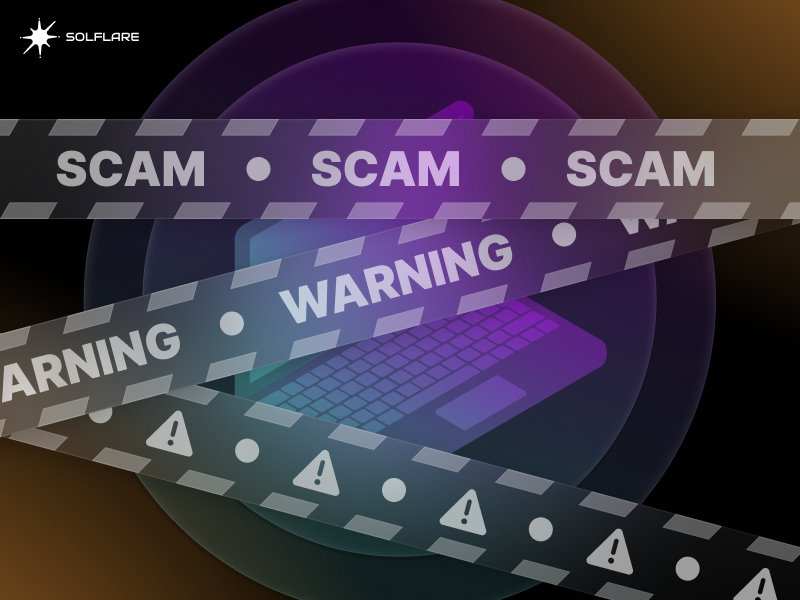Private Keys, Mnemonics, & Keystore Files
If you have been exploring the blockchain world, you might have crossed at least one of these terms. Private keys, Mnemonic phrases, and Keystore files are the most popular ways to give access to a crypto wallet or account. Even though these three serve the same purpose – provide secure access to something – they work very differently. They also present different levels of security for the users. That is why it is crucial to understand what private keys, mnemonics, and Keystore files are and how they differ. It will allow you to decide which wallet or account fits better your needs and security standards.
Starting With the Basics
Whenever you open an account on the blockchain, be that a wallet or an exchange account, it will consist of two parts: the public key and the private key.
The public key is your public address or at least kind of that. In some networks, this is not the case since they might have a separate public key that acts as an intermediary that you won’t even see. But to make understanding these concepts easier, let’s state that the public key is the public address you can share with your contacts so they can send you tokens, for example. Thus, the public key is like your email address or postal address.
The private key, on the other hand, is the method you use to access whatever is inside that account. In the case of a crypto wallet, for example, the private key is the method you will use to access your assets stored in the wallet. This information cryptographically verifies that you are entitled to transfer these assets. It can be compared to your email account’s password or the key to your mailbox.
The Difference Between Private Keys, Mnemonics, Keystore Files
Understanding the difference between these terms becomes easier if explained gradually. That is because a given platform on the blockchain doesn’t need to choose between one or the other, but instead, it can sometimes overlap them to be more secure and add different features. So, let’s go in stages:
After you create a crypto wallet, an address will be generated that will be unique to your wallet. This address, the same as the public key in most cases, cannot be modified. However, it can be simplified, for example, by using a blockchain domain name service.
When you create or import your wallet, you must set a password. This password can be modified by either inserting your old password or re-importing your wallet with a mnemonic or private key. The password encrypts and decrypts your wallet on your device locally.
Now let’s get into what you are here for:
Private Key
A private key is a string of random characters that can give you access to your account. After creating your wallet and entering your password, you will get your private key.
A wallet has only one private key that can’t be modified. If you lose your private key, you won’t be able to recover it with your password. But with the private key, you can re-import your wallet and reset your password. Thus, the private key must be kept safe and cannot be revealed to anyone. Otherwise, someone else can transfer money from your wallet using it.
Keystore File
A Keystore file, also known as UTC/JSON file, is created with your private key and a password.
Private Key + Password -> Keystore File
It encrypts the private key of your wallet. This way, your wallet is more secure than with a raw private key. It is essential to know that if you have the Keystore file (no password), you won’t be able to “travel backward” to acquire the private key. However, if the password is combined with the Keystore file, you will be able to find your private key:
Keystore file + password -> Private Key
Mnemonic Phrase
A Mnemonic Phrase, also known as a seed phrase or recovery phrase, is a variation of a private key and works slightly similarly. A seed phrase is composed of a set of words that most commonly varies from 12 to 24 words and are separated by a space. This can add extra security to your account. Mnemonic Phrases more or less look like this:
magician crumble practice give trust close laugher whole path late fire least
These phrases may be used to generate a theoretically limitless number of accounts. Mnemonic Phrases are often used with hardware wallets and should be written down by the user on a piece of paper to back up their digital assets safely.
Mnemonic Phrase + Derivation Path + (optional) Password -> Private Key
The derivation path is a numerical representation of the private key/address you want to access. Unlike a Keystore file, turning a private key into a mnemonic phrase is impossible. It is only a one-way street. Thus, keep your mnemonic phrase stored in a safe place because it will be your primary access and restore wallets that use it. Adding a password on top of mnemonic phrases is optional, like how Keystore files have a password.
Some of the main benefits mnemonic phrases offer are that they are easy to memorize, secure, and simple to store, and reading them is smooth to the human eyes.
While the mnemonic can restore your wallets and export private keys, private keys won’t enable you to re-export your mnemonic if you lose it. Seed phrases should be the most important way to access your wallet and be backed up safely.
